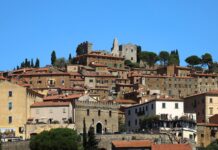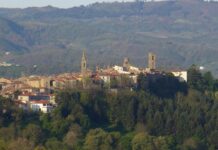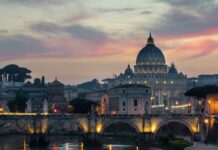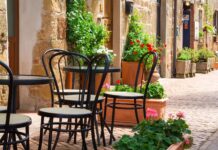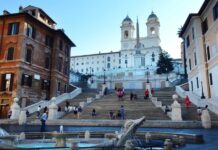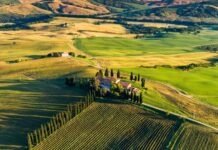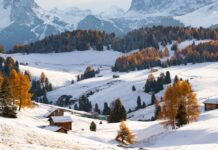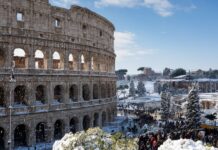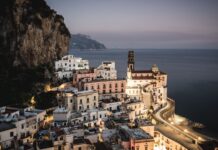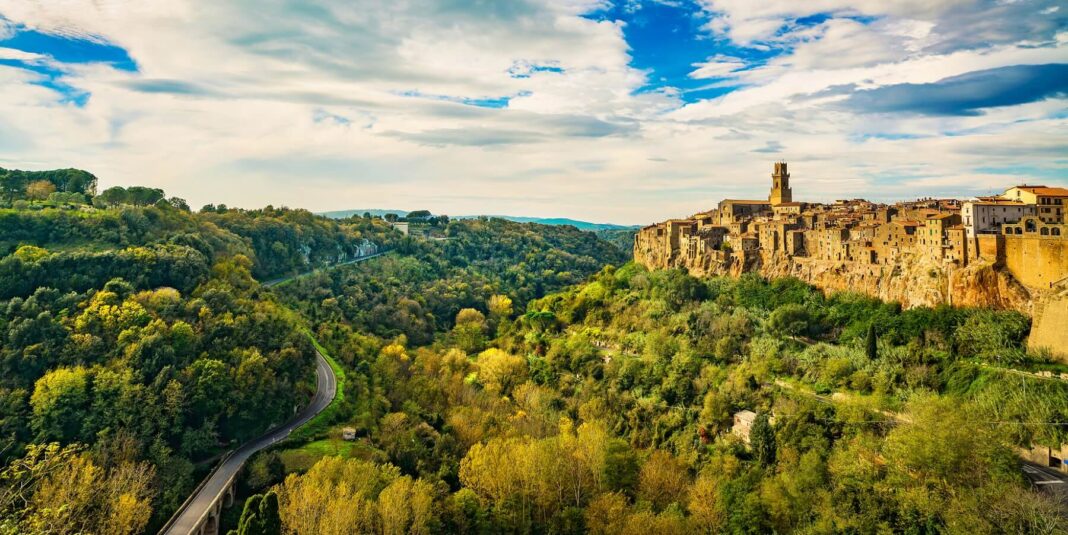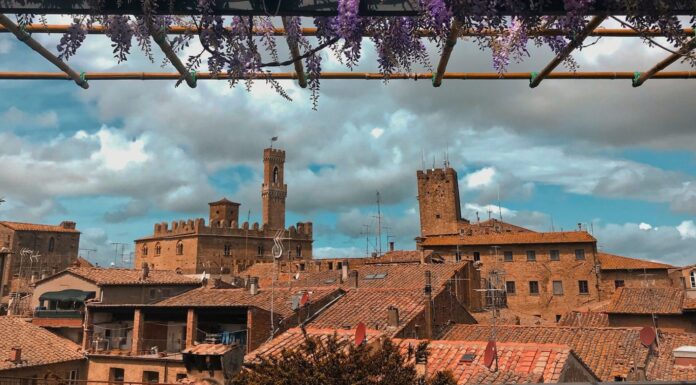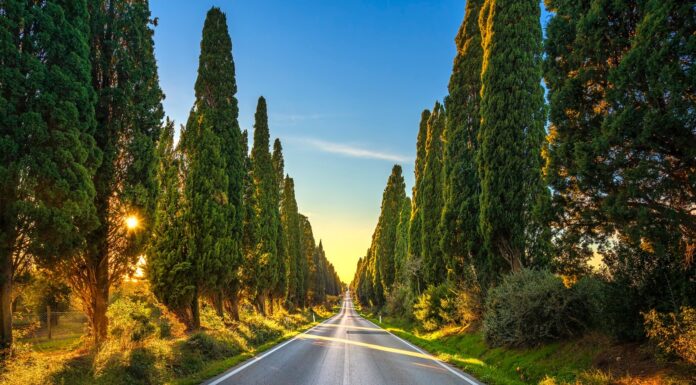The town of Pitigliano, Italy, is sure to charm any visitor. Designated as one of the most beautiful villages in Italy (“i borghi più belli d’Italia”), it contains a pleasant historical center surrounded by ancient walls. From fascinating museums to Etruscan sites, Pitigliano has something to offer everyone.
Although Pitigliano is in the much-loved region of Tuscany, it is not overcrowded like much of the region. Instead, the town of Pitigliano is authentic in its charm. It offers visitors an array of unique sites, including a 17th-century aqueduct and an ancient Jewish ghetto. Built upon a tufa rock ridge among the beautiful Tuscan countryside, this town is a must-stop for anyone looking to get off the beaten path.
Read on to discover why you should consider adding Pitigliano to your next itinerary.
Where is Pitigliano?
Pitigliano is in central Italy in the Maremma region of southern Tuscany. With approximately 3,500 residents, it is a small but charming hill town. From its location, it offers stunning views of the surrounding hills. The largest nearby town is the provincial capital of Grosseto, located about 50 miles (80 kilometers) northwest of Pitigliano.
Pitigliano, Città del Tufo – (City of Tuff)
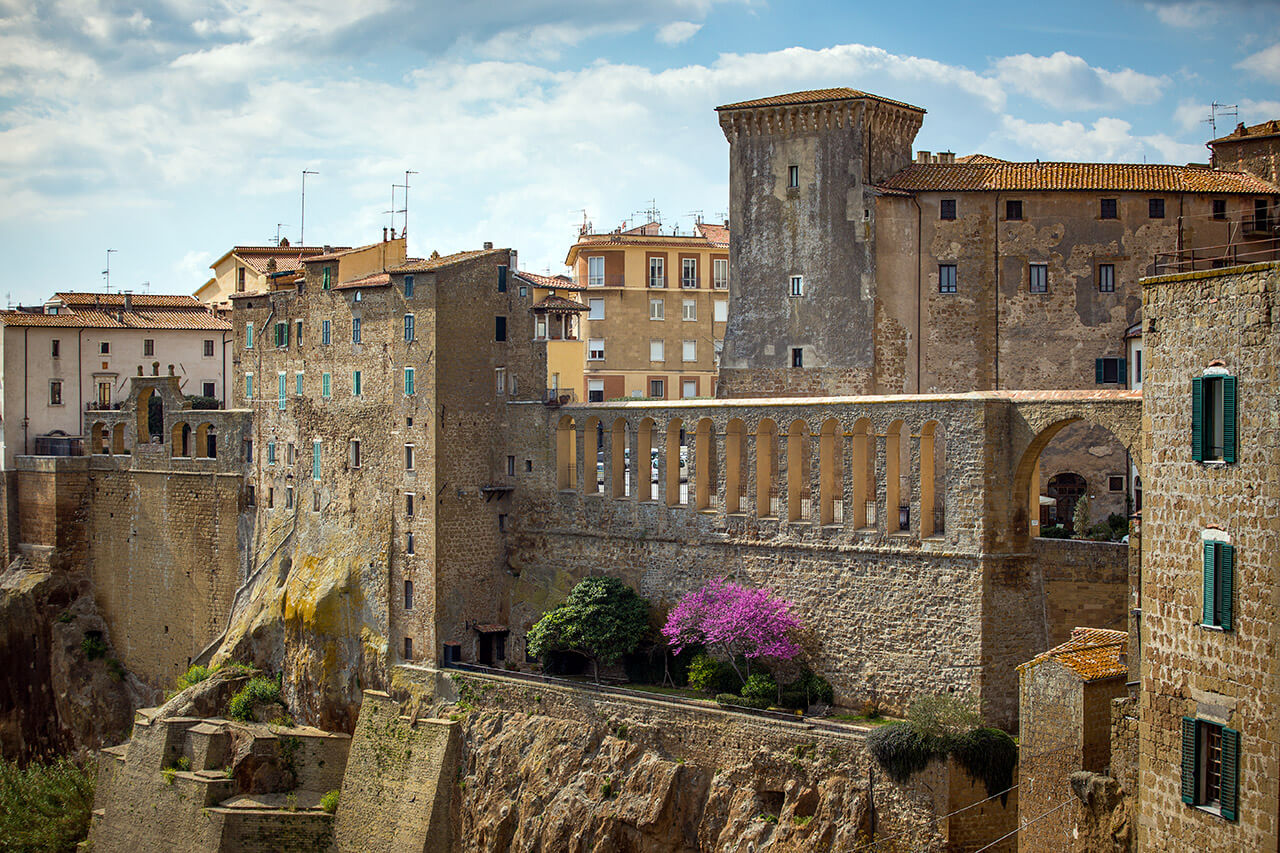
Known as the Città del Tufo, the town of Pitigliano is unique in that it is built upon tufa rock or “tufo.” Tufa rock, formed long ago from a volcanic eruption, is characteristic of this area of the Maremma region. It was a crucial component in the construction of numerous buildings in the area, including the Palazzo Orsini and Medici Aqueduct.
10 Things to Do & See in Pitigliano
While Pitigliano is a relatively small town, it is definitely worth a visit. The landscape before reaching the city is breathtaking, and also there are many worthwhile attractions. Many of the sites are in the historical center, so you can easily reach most on foot.
1. Historical Center
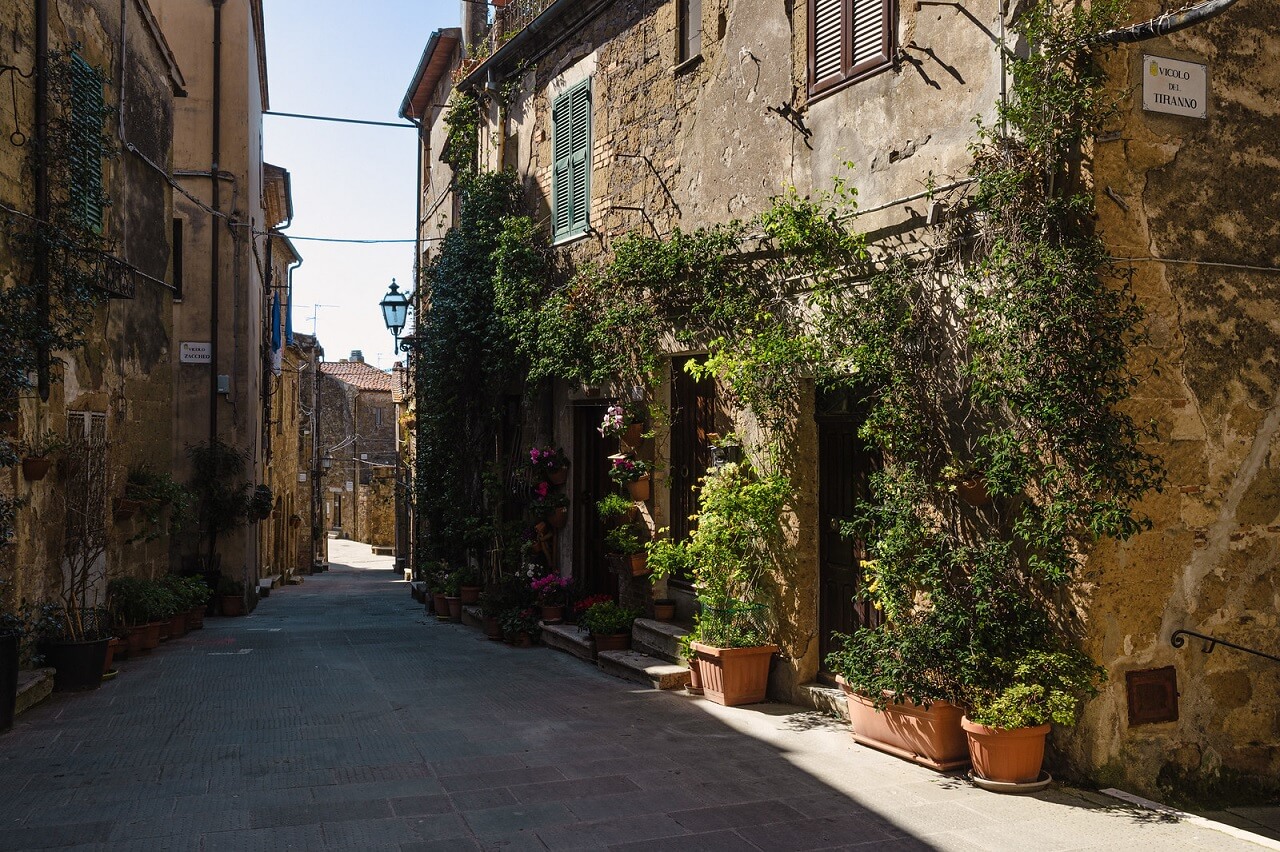
Not to be missed, the charming “centro storico,” or historic center, is a compact and pedestrian-friendly area of alleys, or “vicoli.” It is primarily centered around three main parallel streets, including via Roma, via Zuccarelli, and via Vignoli. Here you can take a stroll, soaking up the relaxing atmosphere. Most of the important sites are located here, along with several restaurants and shops.
Delve into the profound heritage housed within the centro storico; visit the Palazzo Storico with its Renaissance architecture or explore the intricacies of the local craftsmanship at the artisanal boutiques dotting these charming streets. Embrace the seamless fusion of tradition and modernity, with every step revealing a new facet of this enchanting district. Explore, indulge, and savor the layers of the past interwoven with the present, making your visit an immersive journey through time.
2. Little Jerusalem
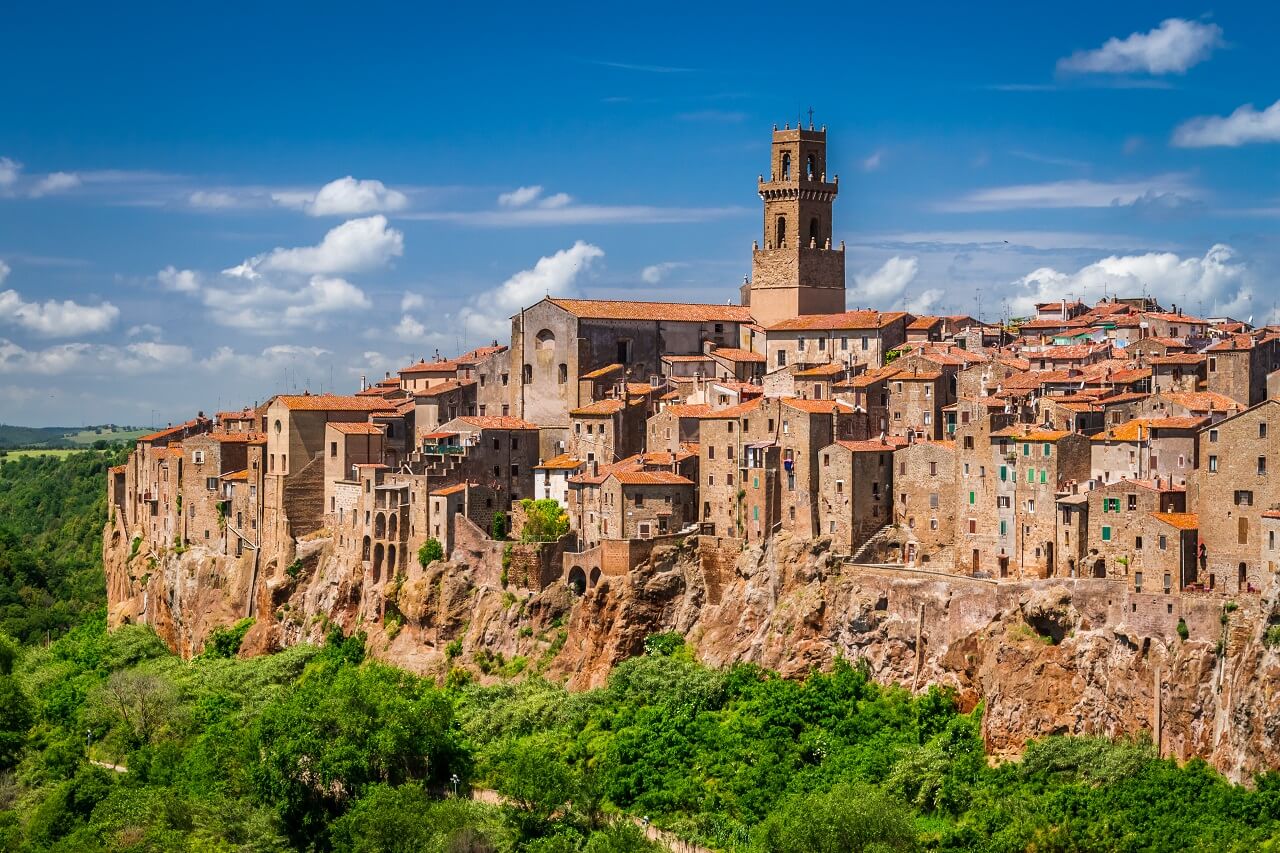
Known as “Little Jerusalem,” a visit to Pitigliano’s historic center would not be complete without a visit to the Jewish Ghetto. The town of Pitigliano has a rich Jewish history dating back to the 15th century; however, few Jewish community members remain today.
Under the Fascist rule, a series of racial laws were passed between 1938-1943. Meant to discriminate and segregate racially, members of the Jewish community were targeted. Many Jews fled Pitigliano around this time. Those who did remain were allegedly able to escape capture from the Nazis with help from their Christian neighbors.
You can feel remnants of the strong Jewish presence throughout the Jewish Ghetto. For example, there is a kosher butcher, ritual baths, wine cellars, an oven for traditional matzah, and a dye works. At the heart of the Jewish Ghetto lies the Pitigliano Synagogue. It was built in 1598, and later damaged during World War II and during a partial tufa rock collapse. Restored in 1995, it is currently open to visitors. Please note it is closed on Saturdays and Jewish holidays. You can purchase tickets at the adjacent Museum of Jewish Culture. The museum includes displays of objects used in Jewish worship.
3. Vie Cave
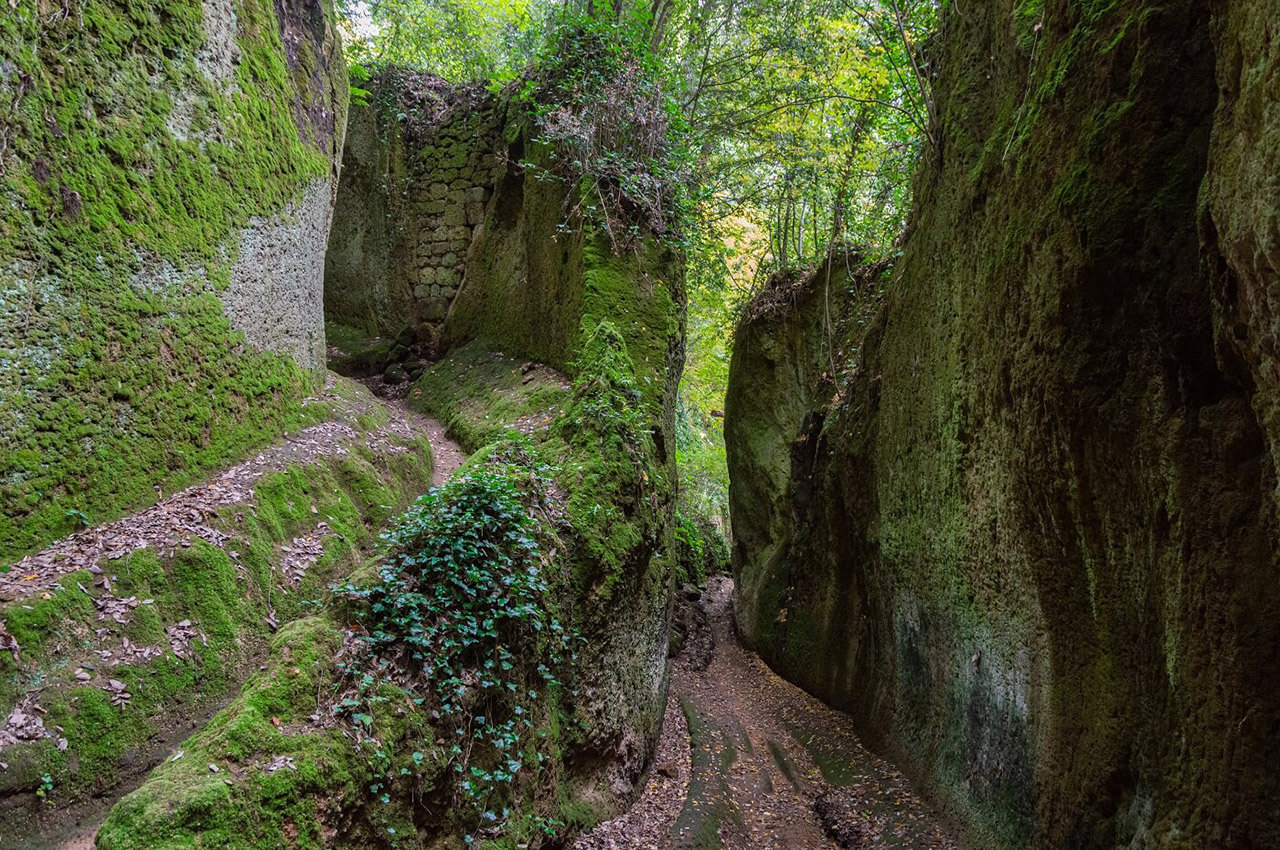
A hike along the Vie Cave is a must-do in Pitigliano if you’re looking for adventure. The surrounding area of Pitigliano is studded with caves and Etruscan sites. During Etruscan times, these ancient people carved roads into the tufa rock for reasons still unknown. Several caves can be visited, including the Via Cava del Gradone, Via Cava of San Giuseppe, and the Via Cava of the Madonna delle Grazie. There is a well-marked pathway, “Path of the Vie Cave” connecting these sites. It begins from the historic center of Pitigliano.
Undoubtedly, embarking on a journey along the Vie Cave is an adventure seeker’s delight in Pitigliano. The environs surrounding this ancient town are punctuated with caves and Etruscan remnants. In the enigmatic era of the Etruscans, these enigmatic people carved roads into the enduring tufa rock, leaving behind an archaeological mystery. Among the notable caves open to exploration are the Via Cava del Gradone, Via Cava of San Giuseppe, and the Via Cava of the Madonna delle Grazie. A clearly delineated “Path of the Vie Cave” seamlessly links these historical sites, commencing from the heart of Pitigliano’s historic center.
4. Palazzo Orsini

Dating back to the 14th century, the stunning Palazzo Orsini is a palace fortress near Pitigliano’s entrance. The Aldobrandeschi Family originally lived there, followed by the Orsini Family and Medici Family. Eventually, it was the residence of the Bishop of Sovana and the office of the Diocese.
Today most of the Palazzo Orsini has been converted into a museum that houses Etruscan artifacts, artwork, and even a medieval torture chamber. Also considered part of the Orsini Fortress is the adjoining 15th-century walls surrounding Pitigliano.
Explore this living testament to history, where each stone whispers tales of noble lineage and cultural evolution. The museum invites you to traverse time through its rich collection, providing a deeper understanding of the Etruscan legacy and medieval practices. The encompassing 15th-century walls offer not only protection but a visual journey into Pitigliano’s enduring past.
5. Fontana delle Sette Cannelle
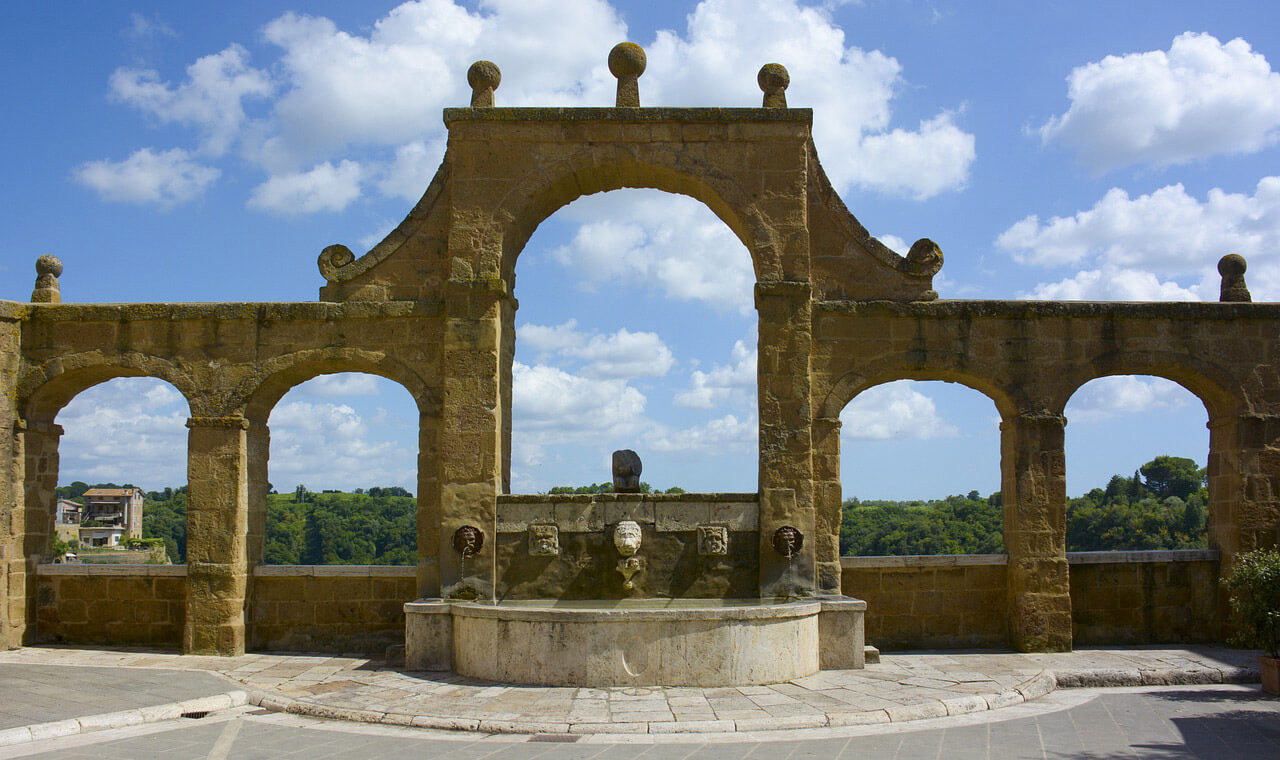
Located in the main piazza of Pitigliano, the imposing Fontana delle Sette Cannelle, or Fountain of the Seven Spouts, was commissioned in 1545 by a member of the Orsini Family. Built at the head of the Medici aqueduct, the fountain features seven spouts, each depicting the head of an animal.
There are also five arches covered in tufa blocks. In the past, the residents of Pitigliano used it as a public fountain. It makes a spectacular photo op as the arches seemingly frame the breathtaking Tuscan landscape.
6. Medici Aqueduct
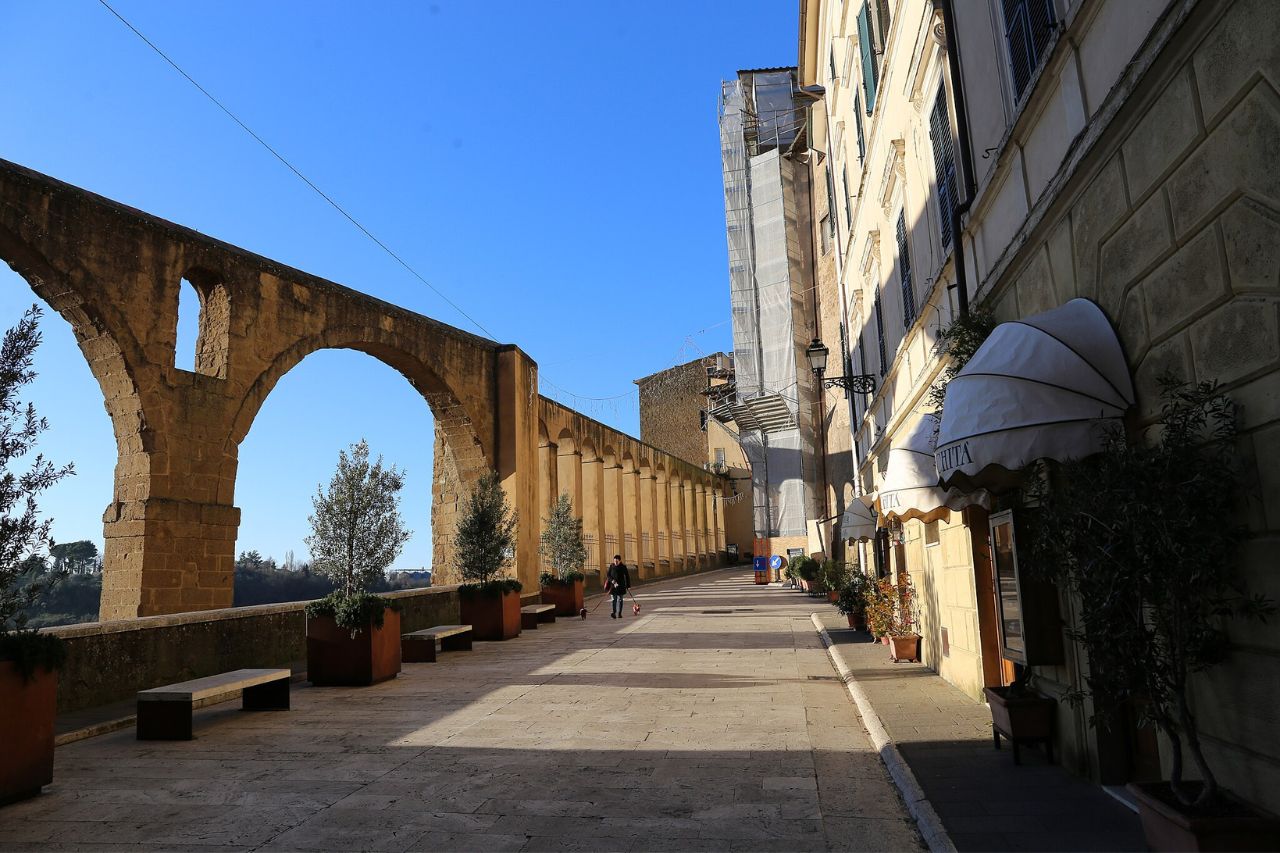
Impossible to miss when looking up at Pitigliano is the imposing arches of the Medici Aqueduct, or “Acquedotto Mediceo.” The aqueduct was once used to transport water to the inhabitants of Pitigliano. Initially commissioned by the Orsini Family in the 16th century, it was completed in 1639 under the rule of the Medici.
These monumental arches, stretching proudly across the sky, not only signify engineering prowess but also stand as silent witnesses to Pitigliano’s reliance on innovation. As you stand beneath their shade, the connection between the town’s history and these arches becomes an integral part of the visitor’s experience. The Medici Aqueduct, beyond being a utilitarian structure, emerges as a living monument, telling a tale of centuries and echoing with the whispers of Pitigliano’s past.
Italy Travel Secret
Among the majestic arches and hidden passages, it is rumored that some mysterious graffiti were engraved by the builders themselves. These enigmatic signs, visible only to those who observe carefully, seem to be a secret code, an encrypted legacy of the master craftsmen who shaped this marvel of the Renaissance. It is said that whoever manages to decipher the hidden message can unveil ancient stories and previously unknown details about the creation of this architectural masterpiece.
7. Churches
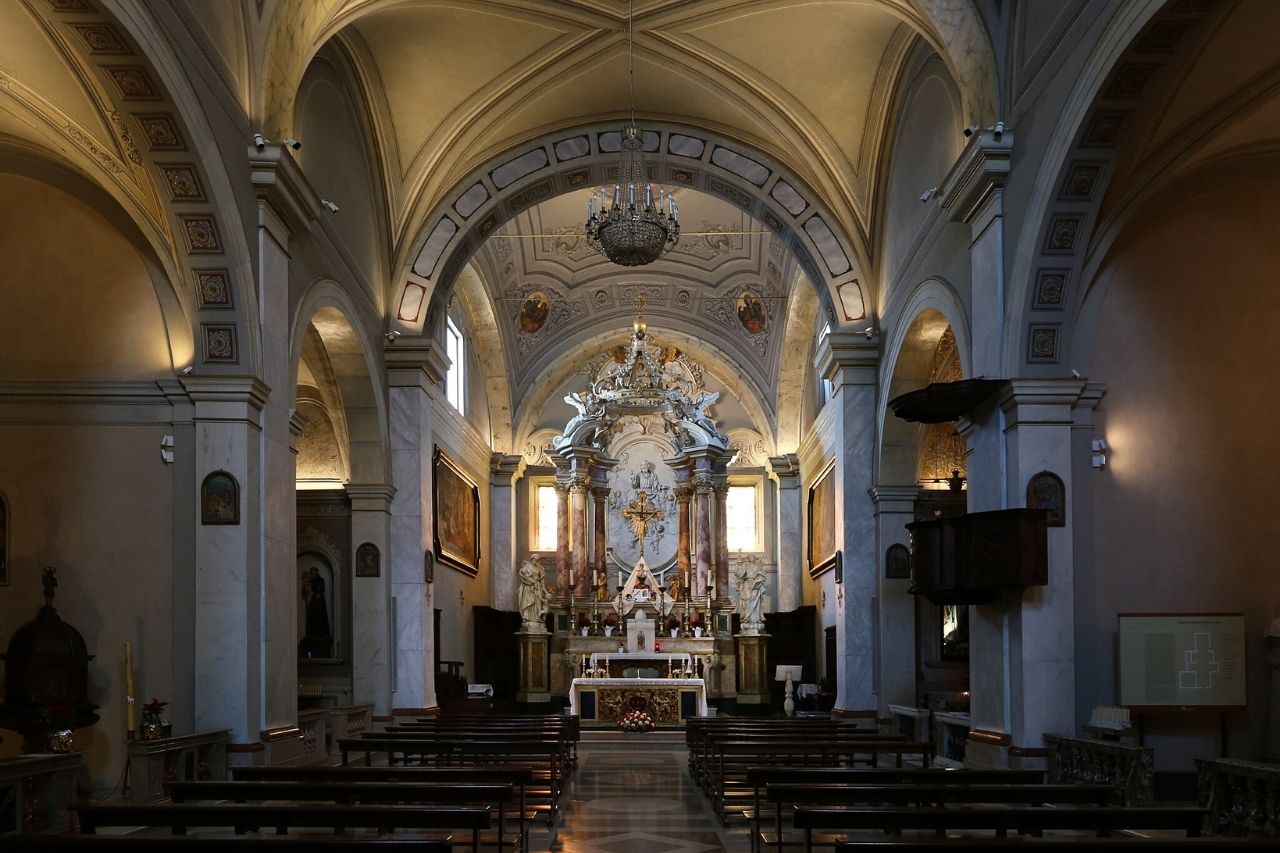
There are several worthwhile churches to visit while in Pitigliano, including the Duomo di Pitigliano and the Church of San Rocco.
More commonly referred to as the “Duomo di Pitigliano,” the elegant Cathedral of Saints Peter and Paul is a Baroque-style church that dates back to the 13th century. It features Saint Peter and Saint Paul statues on each side of its portal. The artwork by Francesco Vanni titled Madonna of the Rosary with Saints is of notable importance in the interior.
Also of prominent importance is the Church of San Rocco. Located at the center of the ancient Capisotto neighborhood, the church is likely the oldest in Pitigliano. It dates back to the 12th century and was rebuilt at the end of the 15th century. It features a late Renaissance façade. The interior contains numerous frescoes and coats of arms for the most famous families of Pitigliano, including the Medici Family.
8. Civic Archeological Museum
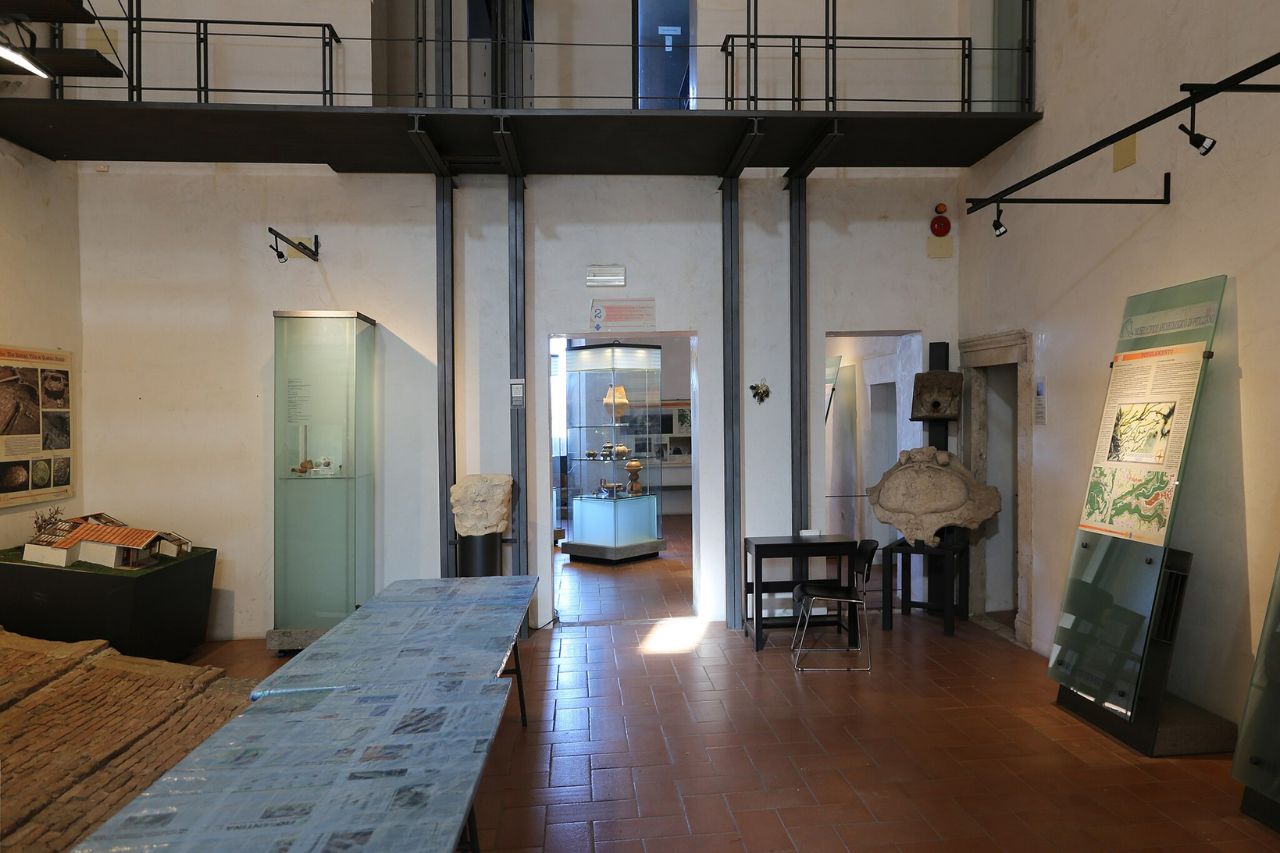
The Civic Archeological Museum contains a vast collection of Etruscan artifacts. The Vaselli collection consists of approximately 1000 artifacts excavated from the nearby Poggio Buco necropolis. From 1955 to 1960, Adele Vaselli excavated the items from her land. There are many vases, “bucchero” pottery, and other artifacts likely dating back to the 6th century B.C. You can also catch glimpses of the workshop at times where the ongoing restoration of the artifacts continues. Guided tours and demonstrations are often available.
This museum holds the esteemed Vaselli collection—an assemblage of nearly 1000 artifacts meticulously unearthed from the neighboring Poggio Buco necropolis by Adele Vaselli between 1955 and 1960. Among these treasures are diverse vases, exquisite “bucchero” pottery, and relics likely dating back to the 6th century B.C. Venture into the workshop, catching intermittent glimpses of the ongoing restoration efforts that breathe new life into these ancient artifacts.
9. Museum of Palazzo Orsini
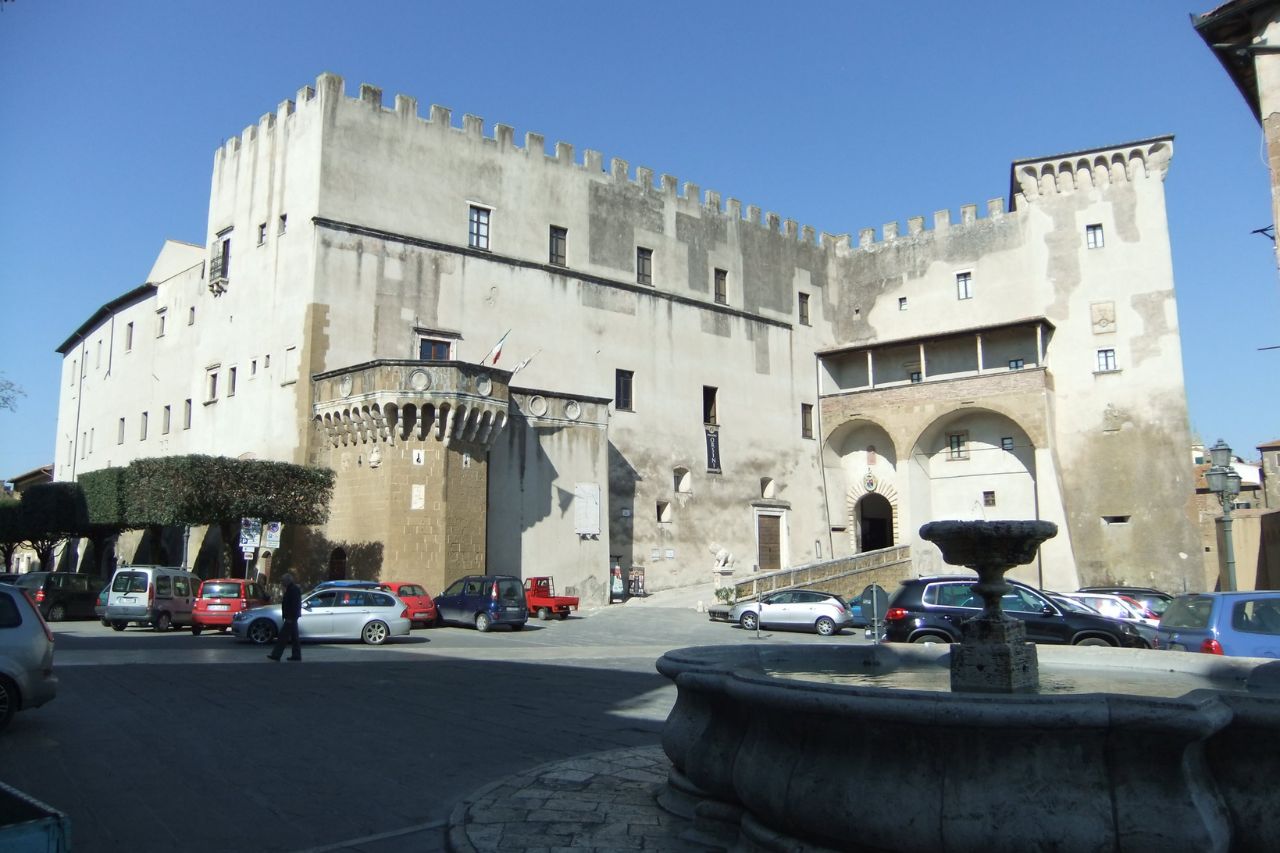
Located at the Palazzo Orsini, the museum has 18 rooms devoted to sacred art. Collected from the Cathedral of Pitigliano and other local churches, the art and liturgical items are distributed among 18 rooms. Of notable importance is the panel Madonna and child with angels and saints Francesco and Pietro by Guidoccio Cozzarelli and the wooden statue of Madonna and Child by Jacopo della Quercia. The museum’s rich array invites visitors on a profound journey through the spiritual and artistic heritage of the region.
10. Alberto Manzi Outdoor Archeological Museum
The Alberto Manzi Outdoor Archeological Museum is a great place for those looking to learn more about life during the Etruscan times. Alberto Manzi, former television host and mayor of Pitigliano, designed the museum. It features two distinct areas: the City of the Living and the City of the Dead.
In the City of the Living, there are two models of Bronze Age huts and an Etruscan house. The City of the Dead contains two Etruscan burial grounds, the Necropoli Gradone (7th-6th century B.C.) and Necropoli San Giovani (6th-4th century B.C.).The Via Cava del Gradone, an ancient Etruscan pathway, connects the two Etruscan sites.
Suggested Accommodations to Stay in Pitigliano
While relatively small, Pitigliano still offers a variety of accommodation options for every type of traveler. Check out our recommendations for some authentic Italian stays in Pitigliano.
Centrally Located Apartment with View
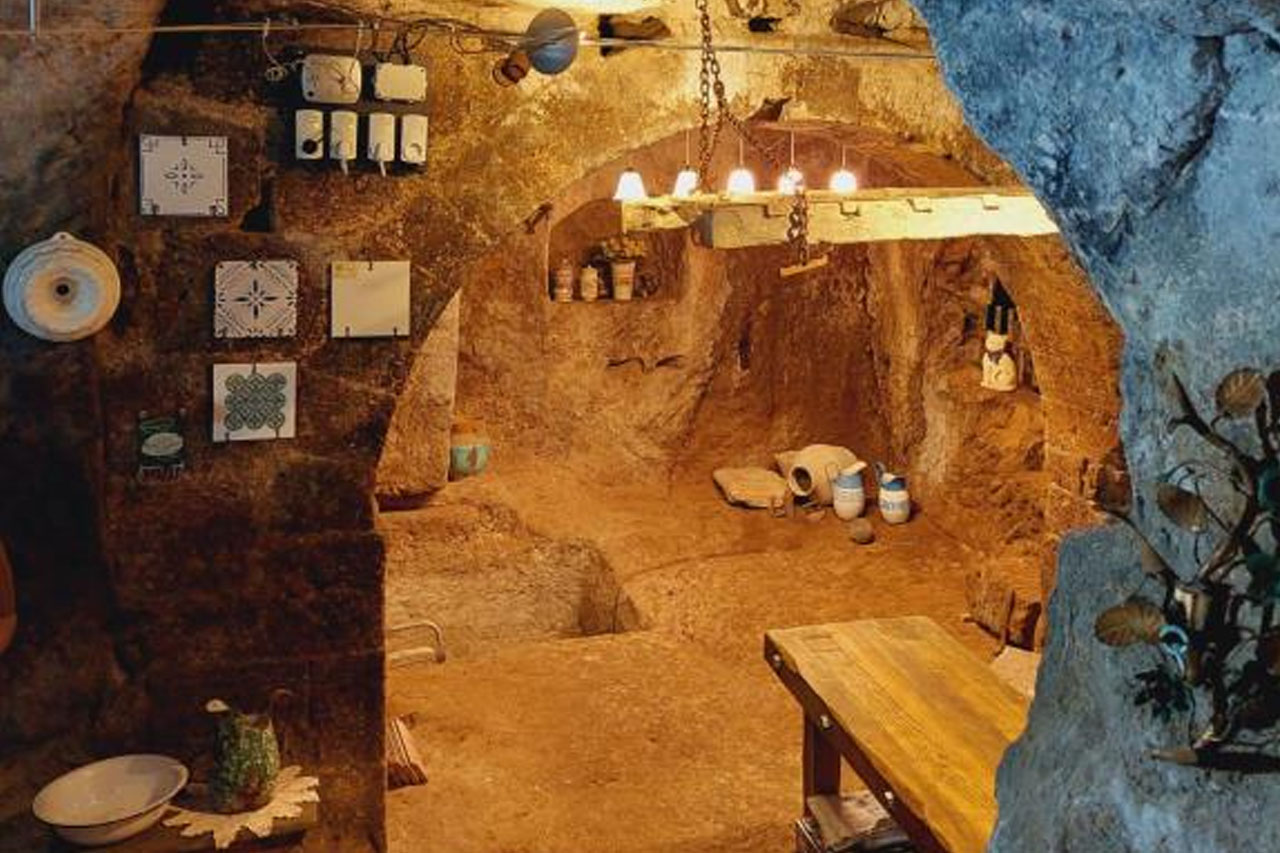
Located in the historic center of Pitigliano, La Yucca 2-bedroom vacation home offers incredible views. The apartment contains unique architectural details, such as exposed brick walls and wooden beams.
Family-owned Farm with Pool

Agriturismo Eco-Bio Villa Vacasio is a charming family-owned agriturismo featuring a pool, patio, and home-cooked meals. Located in the peaceful countryside outside of Pitigliano, the farm grows grapes, olives, and nuts.
Budget-friendly Apartment with Kitchen
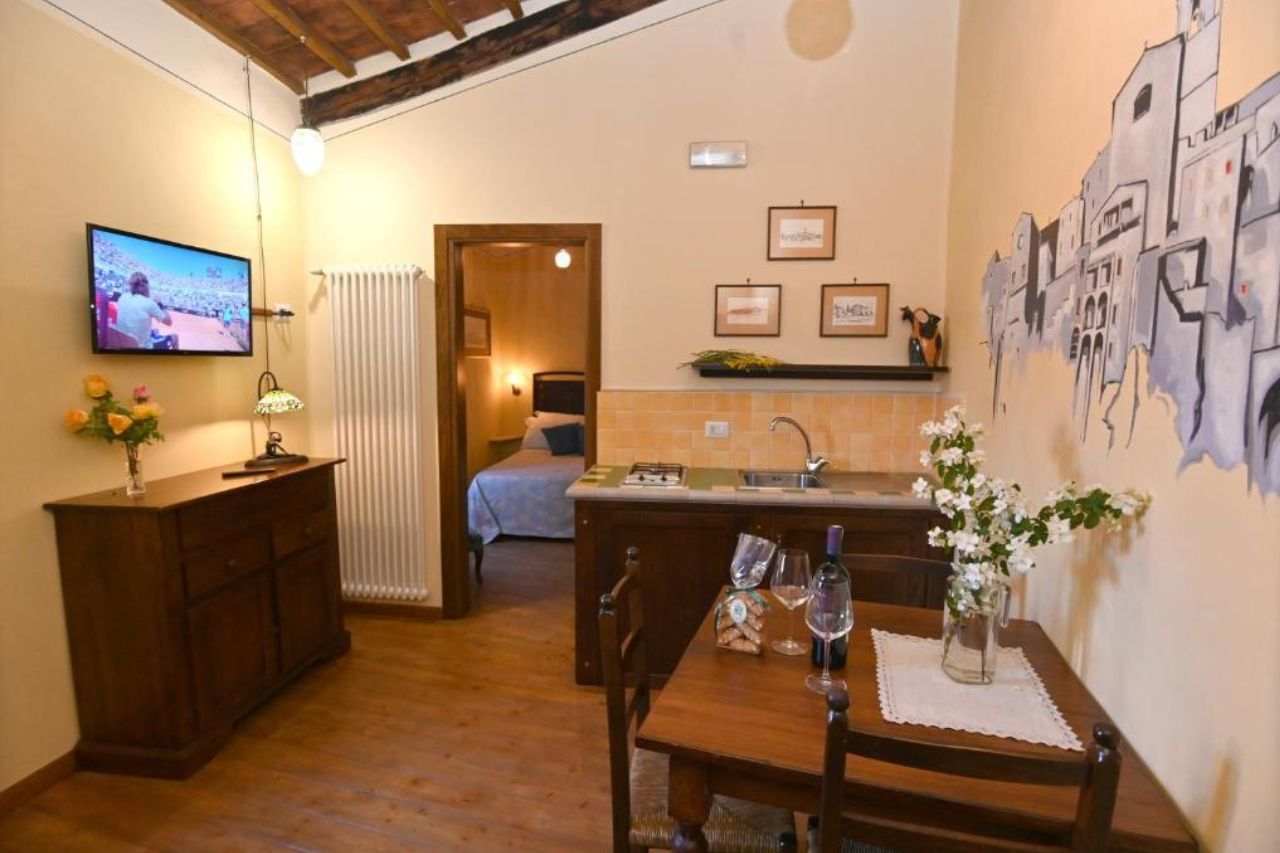
Il Cantuccio is perfect for those on a budget. This small, comfortable one-bedroom apartment is approximately 10 minutes from the historic center on foot. It offers an expansive view of the town of Pitigliano and the surrounding countryside
Pitigliano: Accommodations Map
Booking.com
Pitigliano wines
Pitigliano produces some of the most famous and appreciated wines of the Maremma region. The most well-known is the Bianco di Pitigliano DOC. With over 200 members, the Cantina Sociale di Pitigliano serves as the primary resource for Pitigliano wine. You can purchase wine here or participate in wine tastings. Additionally, in the surrounding area, there are many independent producers that sell wine and offer wine tastings.
Additionally, Pitigliano has been a significant producer of kosher wines since the late 16th century. The “Piccola Geusalamme” association continues this tradition following strict Kosher rules. Both the Bianchi and Rossi wines are some of the best-known products from the area.
Restaurants in Pitigliano
Here are the best restaurants in Pitigliano, where the elegance of taste harmoniously blends with the historical charm of this enchanting Tuscan village.
Trattoria Il Grillo
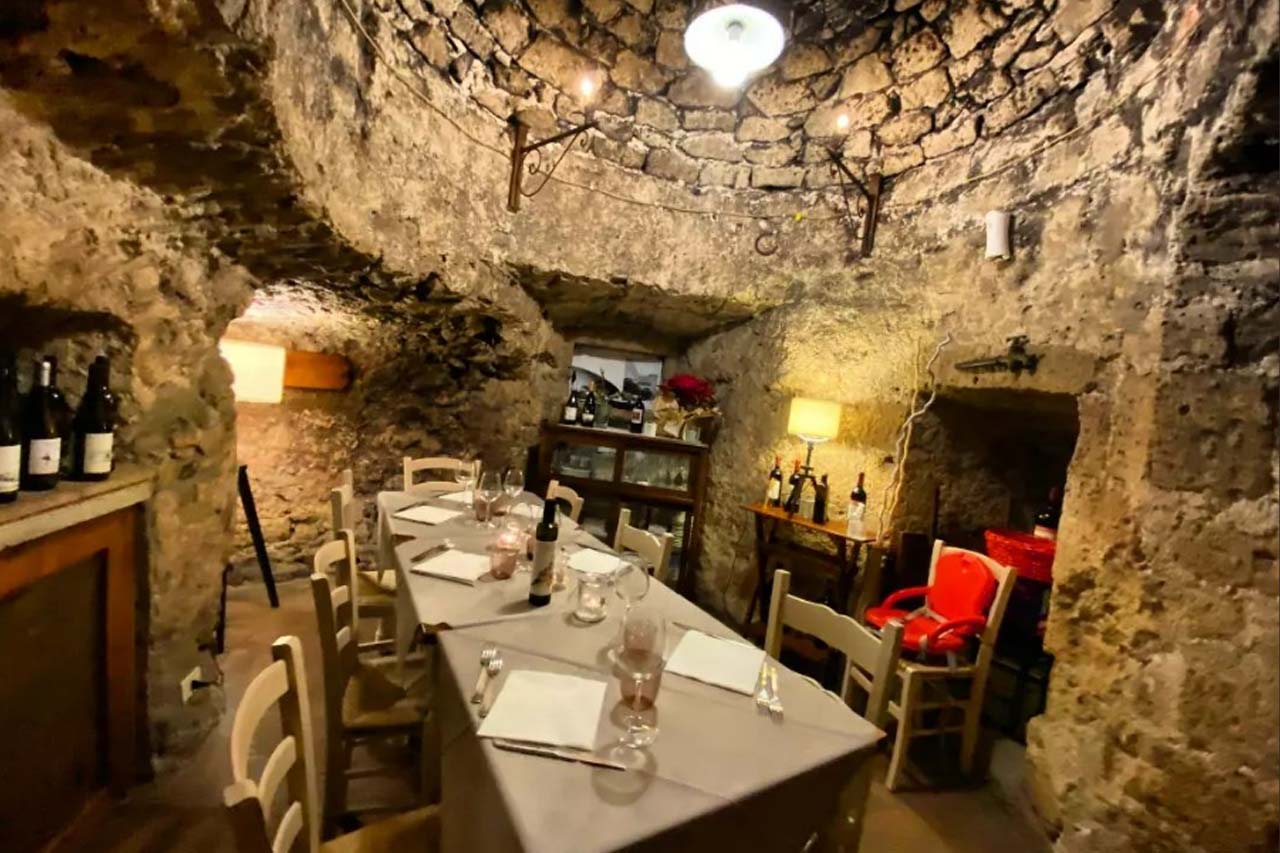
This must-visit restaurant in Pitigliano is rustic and welcoming, it is a small jump back in time. You can order first courses based on handmade pasta, and wild boar ragout, appetizers with local cold cuts and cheeses, and excellent second courses. The portions are abundant and the choice of wines is good.
Il Caveau Restaurant

This restaurant is located in ancient Etruscan cellars carved entirely out of tuff, and offers also a beautiful panoramic terrace. The cuisine focuses on high-quality local ingredients and innovative preparation techniques. The menu includes homemade pasta like pici, cappellacci, and paccheri, dry-aged meats, vegetables and excellent Tuscan desserts.
Hosteria di Pantalla
This restaurant is located a few kilometers from the town, but still within the municipality of Pitigliano. People come here to eat typical Tuscan dishes – such as Maremma tortelli – and the cuisine of northern Lazio, but also for the friendliness of the owner. The portions of the dishes are very abundant and the quality is very good, from the first courses to the second courses up to the desserts.
Read more: Pasta In Tuscany – Deliciousness You Have To Try To Believe
What to See around Pitigliano
Pitigliano makes a great base for exploring nearby attractions. Sorano, Sovana, Saturnia, and Lake Bolsena are all worth a visit when in the area.
Sorano

Like Pitigliano, Sorano is another ancient village built upon the local tufa rock. It, too, contains numerous Etruscan sites. You can wander along the Etruscan-built pathways or soak up the atmosphere of the beautiful historic center.
Sovana
Sovana is a delightful village also set upon a tufa ridge. You can explore the many shops and restaurants tucked away in the narrow alleys. There is an Etruscan necropolis located outside of Sovana. It is linked to the neighboring towns of Sorano and Pitigliano by an ancient Etruscan pathway.
Saturnia
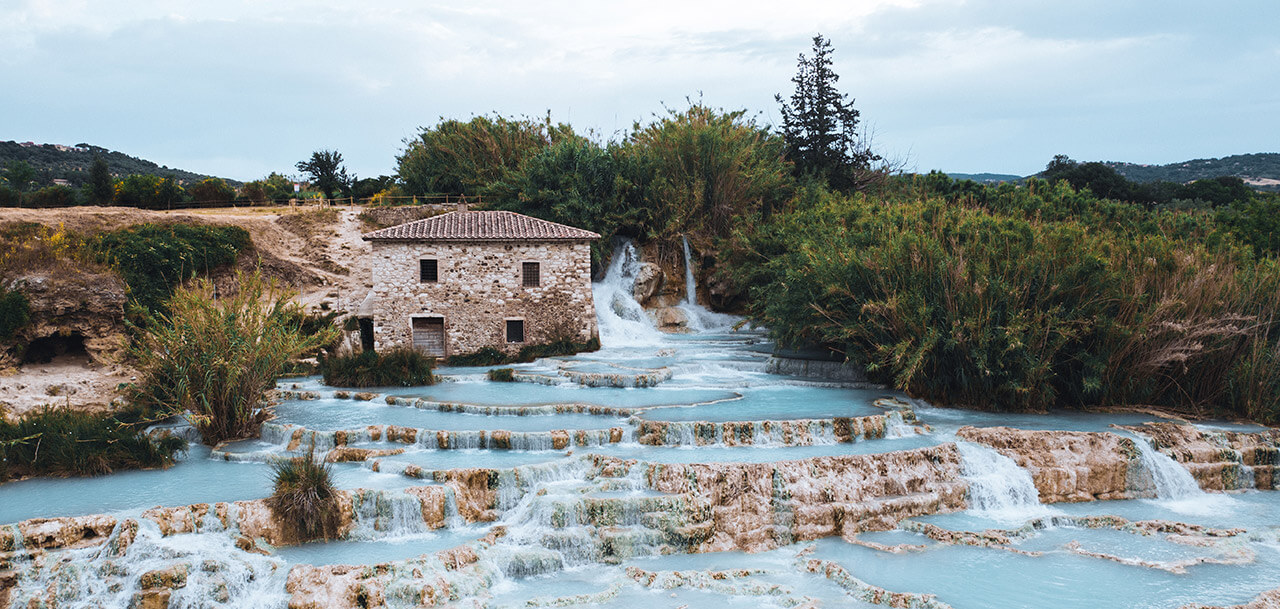
While the village of Saturnia itself is worth visiting, most people flock to the area for the thermal waters. Located a few miles outside the town is the famous “Cascate del Mulino” where visitors can enjoy the hot sulfur springs for free.
Lake Bolsena
Peaceful and relatively isolated, Lake Bolsena is worth a visit. The lake, formed in the crater of an extinct volcano, is one of the largest volcanic lakes in Europe. The town of Bolsena has a small harbor and beach for swimming. Along the shore, there are a handful of restaurants and cafes.
How to Get to Pitigliano
Located just over two hours from Rome and about three hours from Florence, Pitigliano’s central location makes it a great stop when traveling between some of Italy’s major cities. While it may be more convenient to rent a car, it is possible to reach Pitigliano via public transportation.
- Car: From the south, take the SS1 highway, exiting at Montalto di Castro. From here, take the Strada Provinciale Doganella in the direction of Pitigliano. From the north, take the A12 highway towards Rome, exiting onto SR 74 towards Pitigliano. It is recommended to park your car outside the city walls.
- Bus: Buses run daily from Grosseto, Florence, and Siena. You can purchase tickets and locate timetables on the Tiemme website.
- Train: Pitigliano does not have a train station. The nearest train stations include Grosseto, Orbetello, Albinia, and Viterbo. You can purchase tickets and locate timetables on the Trenitalia website.
- Plane: There are several airports to choose from when reaching Pitigliano. The closest major airports include Rome-Fiumicino and Rome-Ciampino (100 miles). Pisa Galileo International Airport (141 miles) and Florence’s Amerigo Vespucci International Airport (120 miles) are also great options.
FAQs about Pitigliano
Let’s explore some frequently asked questions about this enchanting town:
Is Pitigliano Italy Worth Visiting?
Pitigliano is definitely worth visiting, especially if you are interested in exploring unique historical sites and experiencing a distinctive cultural ambiance. Known for its picturesque setting and rich history, Pitigliano offers a unique experience that combines natural beauty with architectural splendor.
Why is Pitigliano Famous?
Pitigliano is famous for its striking appearance, often described as the ‘Little Jerusalem’ of Italy. The town is perched atop a tuff rock and is known for its ancient buildings carved into the cliffside. Its Jewish heritage, which dates back to the 16th century, is a significant aspect of its cultural history. Pitigliano’s narrow alleys, historic Jewish Quarter, and the Synagogue add to its historical importance.
How long to Stay in Pitigliano?
The ideal length of stay in Pitigliano depends on your interests and itinerary. Generally, a 1 to 2-day visit is sufficient to explore the main attractions of the town, including the historic center, the Jewish Quarter, and nearby natural sites. However, if you wish to immerse yourself more deeply in the local culture or explore the surrounding region at a leisurely pace, you might consider extending your stay.
What is the Fortress of Pitigliano?
The Fortress of Pitigliano, also known as Orsini Fortress, is a significant historical landmark in the town. Originally a medieval castle, it was transformed into a Renaissance fortress by the Orsini family in the 16th century. The fortress is notable for its impressive architecture and strategic location, offering panoramic views of the surrounding valley and countryside. It symbolizes the town’s rich history and is a focal point for visitors interested in medieval and Renaissance architecture.
Conclusion
In conclusion, Pitigliano stands as more than just a picturesque Tuscan village; it is a journey through time, a tapestry woven with history, and a culinary haven. From its ancient architecture to the vibrant local flavors served in its finest restaurants, Pitigliano invites visitors to savor the richness of both its past and present. This charming town captivates the senses, leaving an indelible imprint of the beauty and cultural richness that defines this hidden gem in the heart of Tuscany.


